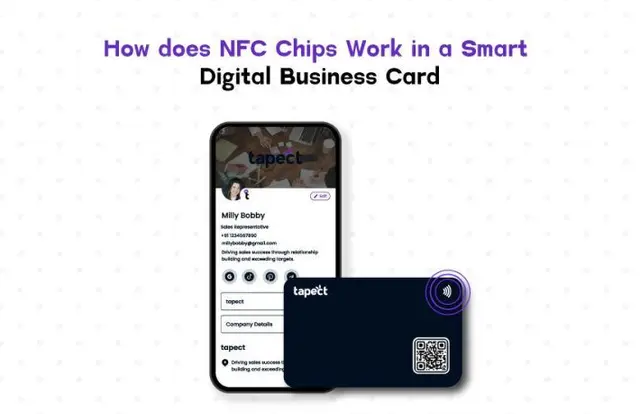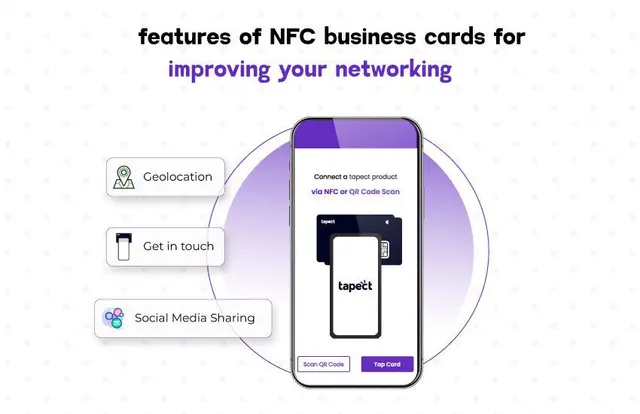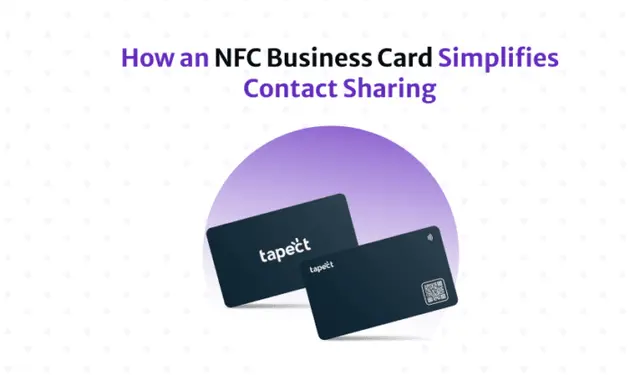In the evolving landscape of business networking, traditional paper business cards are increasingly being complemented or replaced by innovative digital solutions. One such advancement is the smart digital business card, which leverages Near Field Communication (NFC) technology to enhance and streamline the process of exchanging contact information. Understanding how NFC chips function within these smart cards can provide valuable insights into their benefits and potential applications.
Understanding NFC Technology
Near Field Communication (NFC) is a short-range wireless communication technology that enables devices to exchange data over distances of a few centimeters. This technology operates at a frequency of 13.56 MHz and uses electromagnetic induction to transfer data. NFC is a subset of Radio Frequency Identification (RFID) and is designed for simplicity and ease of use nearby interactions.
The core component of NFC technology is the NFC chip, which is embedded within various devices and objects, including smart digital business cards. This chip can store and transmit data when brought close to an NFC-compatible device, such as a smartphone or tablet. The communication is secure, fast, and does not require manual pairing or complex setup procedures.
Integrating NFC Chips in Smart Digital Business Cards
A smart digital business card equipped with an NFC chip provides a modern alternative to traditional paper cards. Here’s how NFC chips are integrated into these cards and how they function:
Embedding the NFC Chip:
The NFC chip is embedded within the smart business card during its manufacturing process. This chip is typically small, thin, and flexible, allowing it to be integrated seamlessly into various types of cards without adding significant bulk.
Programming the NFC Chip:
Once the NFC chip is embedded, it can be programmed with a variety of information. This might include contact details, links to online profiles, portfolio URLs, or other relevant data. The programming process involves encoding the chip with the desired information, which is then accessible to any NFC-enabled device that interacts with the card.
Activation Through Proximity:
To use the smart business card, the cardholder simply needs to bring it close to an NFC-enabled device. This could be a smartphone, tablet, or any other device with NFC capability. The NFC chip in the card automatically communicates with the device, transferring the encoded data in a matter of seconds.
Instant Data Transfer:
When the NFC chip transmits data, it typically involves a single tap or near-touch interaction. The recipient’s device reads the information from the chip and presents it to them immediately. This seamless and efficient data transfer eliminates the need for manual input, reducing the chance of errors and saving time.
Interactive Features:
Beyond static contact information, NFC-enabled smart business cards can offer interactive features. For example, they can link directly to an online portfolio, social media profiles, or a personalized website. This dynamic functionality provides recipients with more comprehensive and engaging ways to connect with the cardholder.
Enhanced Security and Privacy:
NFC technology includes built-in security features that protect the data being transmitted. Communication between the NFC chip and the receiving device is encrypted, making it more secure than traditional methods of data exchange. Additionally, the data on the NFC chip can be updated or changed as needed, providing flexibility and control over the information shared.
Environmental and Practical Benefits:
By using smart digital business cards, individuals and organizations can reduce their reliance on paper, contributing to environmental sustainability. Additionally, the convenience of digital storage and easy updates to contact information make smart business cards a practical choice for modern networking.
Future Potential:
As NFC technology continues to evolve, the capabilities of smart digital business cards are likely to expand. Future advancements may include enhanced interactivity, integration with other technologies, and even more personalized features, further enhancing the networking experience.
Conclusion
NFC chips play a crucial role in the functionality of smart digital business cards, enabling efficient, secure, and convenient exchange of contact information. By embedding NFC technology into these cards, individuals can streamline their networking efforts, offer interactive features, and contribute to a more sustainable approach to business communication. As NFC technology continues to advance, smart digital business cards will likely become an increasingly valuable tool for professionals seeking to make a lasting impression in the digital age.


